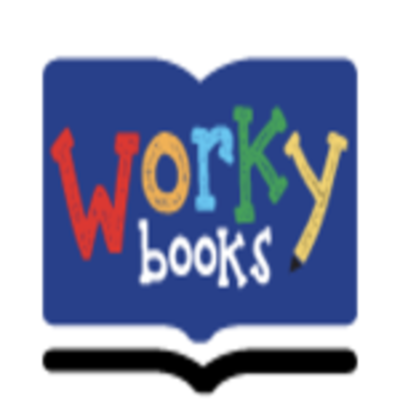Unveiling How to Remember Greater-than and Less-than Symbols
 Workybooks
WorkybooksMathematical symbols can sometimes be confusing for young learners, especially when it comes to distinguishing between the greater-than (>) and less-than (<) symbols. These symbols are fundamental in understanding mathematical concepts and comparisons. At Workybooks, we strive to make learning these symbols easier and more engaging for students. Here are some effective strategies to help children remember and use greater-than and less-than symbols correctly.
Visual Analogies
One of the most effective ways to teach the difference between greater-than and less-than symbols is through visual analogies. A popular method is to use the analogy of an alligator's mouth. Explain to the students that the alligator always wants to eat the larger number. The open end of the symbol (the alligator's mouth) always faces the larger number, while the pointed end (the tail) points towards the smaller number.
For example:
5 > 3 (The alligator's mouth is open towards 5 because it is the larger number.)
2 < 4 (The alligator's mouth is open towards 4 because it is the larger number.)
Using Number Lines
Another helpful technique is to use number lines. By placing numbers on a number line, students can visually see which number is greater or smaller. This method reinforces the concept that numbers increase as they move to the right and decrease as they move to the left. Practicing with number lines can help students quickly identify and compare numbers using the correct symbols.
Hands-On Activities
Engaging students in hands-on activities can significantly improve their understanding and retention of mathematical concepts. Use objects like blocks, coins, or counters to create visual and tactile comparisons. For example, place different quantities of objects in two groups and ask students to compare them using the greater-than and less-than symbols.
Interactive Worksheets
At Workybooks, we offer a variety of interactive worksheets designed to help students practice and master the use of greater-than and less-than symbols. These worksheets include fun activities such as matching exercises, fill-in-the-blank questions, and comparison tasks that make learning enjoyable and effective. By regularly practicing with these worksheets, students can gain confidence and accuracy in using these symbols.
Mnemonic Devices
Mnemonic devices are memory aids that can help students recall information more easily. For greater-than and less-than symbols, a simple mnemonic device is to think of the symbol as a small "L" shape for "Less-than." This trick can help students quickly remember that the less-than symbol (<) points to the left.
Incorporating Technology
Using educational technology can also enhance the learning experience. Interactive math games and apps that focus on greater-than and less-than symbols can provide additional practice and reinforcement. These tools often include instant feedback and adaptive learning features that cater to each student's learning pace and style.
Regular Practice and Review
Consistency is key in mastering mathematical symbols. Encourage students to regularly practice comparing numbers using greater-than and less-than symbols with workybooks. Incorporate these comparisons into daily math activities and review sessions. Repetition and continuous reinforcement can help solidify their understanding and recall.
In Conclusion
Remembering and correctly using greater-than and less-than symbols is an essential skill for young learners. By incorporating visual analogies, number lines, hands-on activities, mnemonic devices, and interactive technology, students can develop a strong grasp of these concepts. At Workybooks, we are committed to providing engaging and effective resources, including our free printable worksheets, to support students in their learning journey. Through regular practice and innovative teaching strategies, mastering these symbols can become an enjoyable and rewarding experience for all students.
Subscribe to my newsletter
Read articles from Workybooks directly inside your inbox. Subscribe to the newsletter, and don't miss out.
Written by
